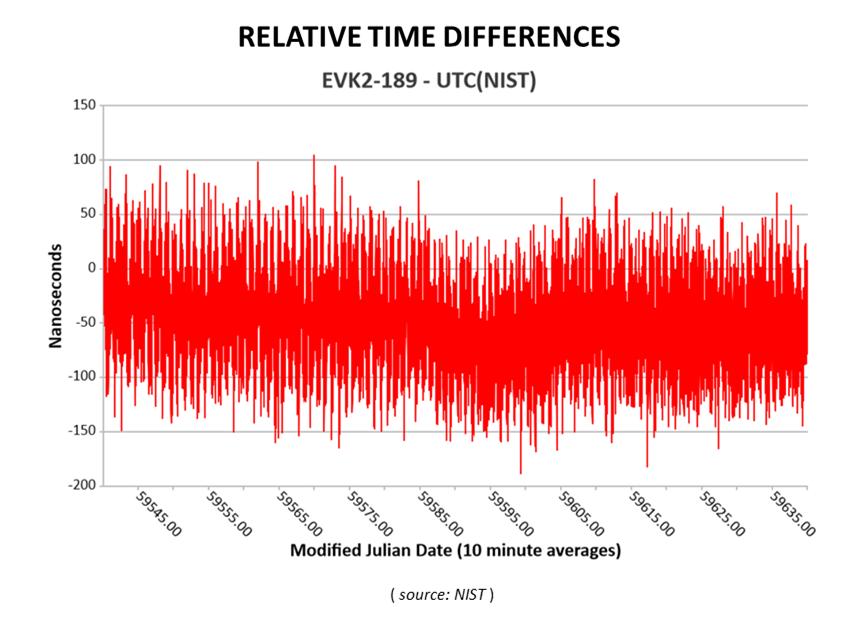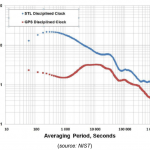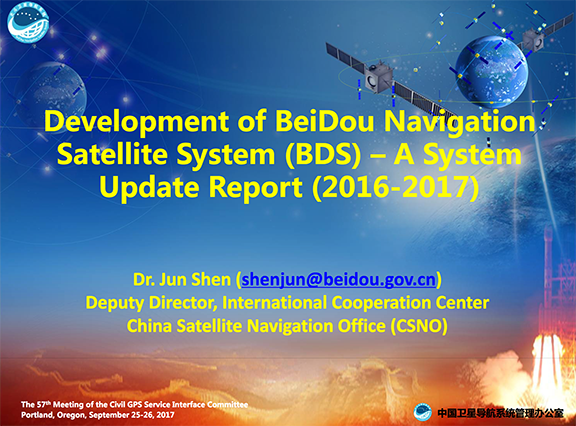Through a collaborative agreement, Satelles will provide its Satellite Time and Location (STL) PNT service to the U.S. National Institute of Standards and Technology (NIST), expanding precision timing distribution options for critical infrastructure.
The agreement was first revealed in NIST Technical Note 2187, “A Resilient Architecture for the Realization and Distribution of Coordinated Universal Time to Critical Infrastructure Systems in the United States,” published in November 2021. The Technical Note also introduced a connection between an STL Ground Monitoring Station (GMS) to the NIST collection of atomic clocks that maintain the official time scale for UTC(NIST), the national standard for time and frequency in the United States produced in coordination with the United States Naval Observatory.
An STL GMS was delivered and configured at NIST’s Time and Frequency Division in Boulder, Colorado, where the ensemble of high-precision cesium beam and hydrogen maser atomic clocks that maintain UTC(NIST) are kept. After a series of successful tests, NIST directly connected the STL GMS to its primary clock ensemble in June 2021—something Satelles CEO Michael O’Connor said had never been done before.
Once the GMS was properly configured and precisely calibrated to NIST’s clock, NIST conducted long-term testing that compared STL to UTC(NIST), O’Connor said. Testing confirmed STL’s long-term stability of better than 25 nanoseconds with short-term time deviation of 50 nanoseconds.
“The further evaluation of STL under the terms of the cooperation agreement aligns with NIST’s remit to expand precision timing distribution options for critical infrastructure,” Satelles Vice President of Commercial PNT Christina Riley said. “And that the engagement has verified STL’s agreement with UTC via UTC(NIST) means our customers can depend on STL as a reliable source of timing that is highly consistent with Coordinated Universal Time (UTC) and is based on a signal that is independent from the Global Positioning System (GPS) and other Global Navigation Satellite Systems (GNSS).”
The partnership
NIST first evaluated STL in 2020 as part of studies reported in Technical Note 2187 as well as in “An Evaluation of Dependencies of Critical Infrastructure Time Systems on the Global Positioning System (GPS)” (Technical Note 2189).
“As NIST notes in these reports, critical infrastructure owners and operators in the private and public sectors require reliable time signals that are resilient to outages of GPS,” Riley said. “Having an alternative form of PNT like STL for backup purposes is part of the responsible use of PNT as defined by the U.S. Government.”
That initial testing formed the backdrop for a “contemporaneous conversation about how to take the evaluation to the next level,” Riley said, ultimately leading to the formal agreement.
The service
STL is an alternative PNT service from low Earth orbit (LEO) satellites that can be relied on as a primary PNT source when GPS/GNSS doesn’t meet performance or operational requirements, O’Connor said.
“STL is also an ideal backup form of PNT to protect GPS/GNSS-dependent systems and platforms from the impacts of a service disruption,” he said, “most notably, infrastructure applications that require an essential contingency capability to protect the operations of PNT-dependent systems and ensure survivability and resilience.”
The GMS in Boulder is a special type of STL receiver that is part of the Earth-based infrastructure of the service used to measure the position and timing of the satellites.
Many Satelles enterprise customers rely on STL as a primary timing source outdoors as well as indoors. Telecom operators, for example, might use the service for 5G wireless network deployments indoors when GPS isn’t available. 5G has strict timing synchronization requirements, making this critical.
A 2020 performance study demonstrated that STL delivered stability comparable to GNSS from within an indoor location where GPS signals weren’t available. During the test, a GPS-disciplined clock (GPSDC) and a Satelles EVK-2 evaluation unit with a quartz oscillator comparable to that in the GPSDC were both compared to UTC(NIST) for 50 days.
“What is significant here,” O’Connor said, “is that NIST’s GPS device was connected to an outdoor antenna whereas the STL receiver was located in a deep indoor environment and was connected to an indoor antenna. Under these conditions—and based on one day of averaging—the GPS instability was less than two nanoseconds (< 2 ns), and the STL instability was only slightly higher at under three nanoseconds (< 3 ns).”
Protecting critical infrastructure
The STL service provides a safeguard against GNSS/GPS disruptions to critical infrastructure that could disable electrical grids, wireless communication networks, financial systems and other public and private infrastructure.
“Satelles has a network of GMS nodes positioned around the world to receive STL signals and calculate the position and timing of the satellites for purposes of producing timing corrections, and now we are fortunate to have a GMS connected inside NIST’s main time lab,” Satelles President and CTO Gregory Gutt said. “It’s an honor to be given direct access to UTC(NIST), especially in an arrangement that delivers benefit to both our customers and NIST.”






